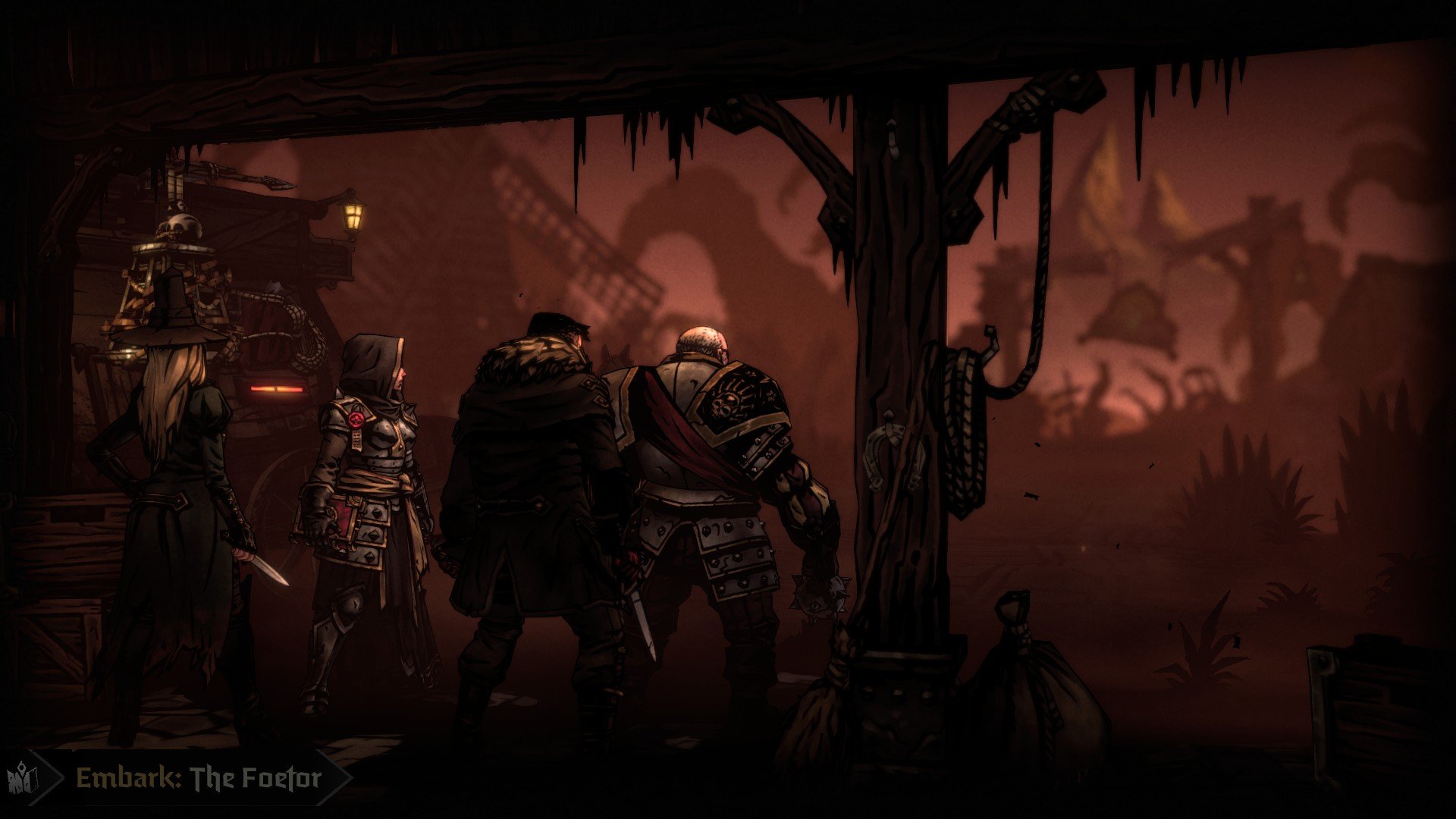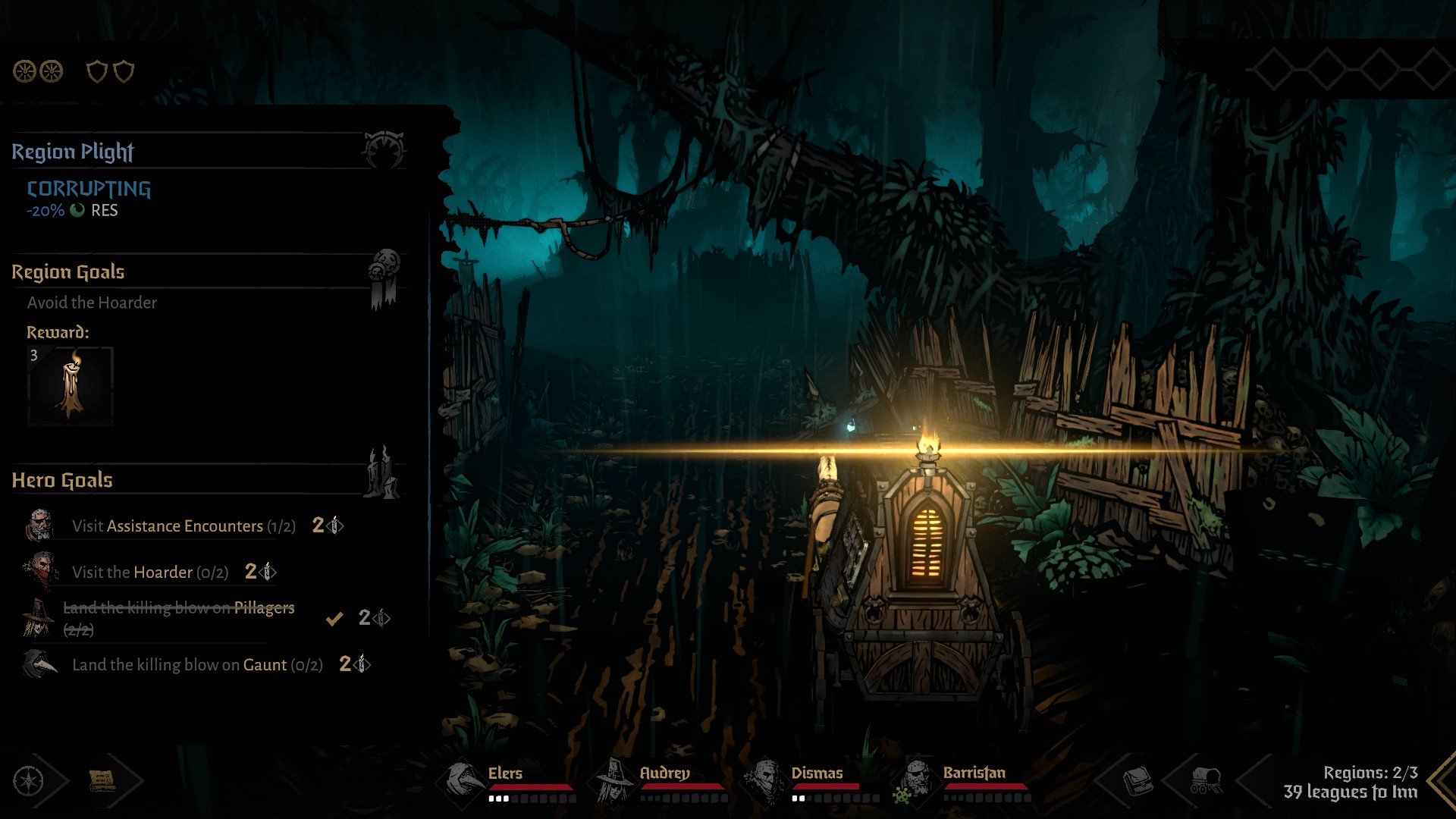Darkest Dungeon 2 Review: A Punishing Journey into Darkness
/Red Hook Studios returns with Darkest Dungeon 2, the highly anticipated sequel to their immensely successful turn-based roguelike RPG. The game is finally out of Early Access on PC, and this time, they’ve pivoted by embracing a more traditional roguelike concept, similar to titles such as Slay the Spire and FTL. Stepping away from the town-improving mechanics of its predecessor, Darkest Dungeon 2 pushes players on a punishing journey through desolate regions populated with relentless enemies, and bosses that will make you want to pull your hair out. Most of your time with the game will be spent failing, but with enough drive, a better understanding of the challenges, and the motivation to push forward, you’ll succeed, and the satisfaction of conquering the most difficult encounters available is a powerful feeling.
The Pain Couch: Immersive Art Style and Gameplay
Two things that are immediately impressive about Darkest Dungeon 2 are how Red Hook Studios have adapted the first title’s unique turn-based gameplay to the more traditional roguelike formula, and secondly, how the hand-drawn art style that made the series stand out made the transition to 3D without losing its quality.
The game is bleak and dark, as every region emits dark clouds that loom over the world. Every encounter you face rarely gives you breathing room, as each situation affects you negatively and positively at the same time, putting pressure on almost every decision you make. From helping those on the side of the road to the bandits that try to derail your stagecoach, there is never any sense of respite until you reach the next inn, the place where your team can rest and reflect on themselves for the next part of their journey.
Your characters look tired and on the brink of giving up. This is shown visually through most of the characters, as the art aptly conveys the sad state of humanity. Everything around you is in turmoil as every turn highlights how this is the end of this world. The enemy designs and environment express this perfectly as you travel the road, going through places plagued with rotten flesh, mutated fish life, and otherworldly beings that are hell-bent on ending you where you stand.
The game has five acts, called Confessions, and beating the boss at the end of the run will unlock another Confession. When doing a Confession, a run can last anywhere from 30 minutes to multiple hours on higher acts, as the game’s difficulty ramps up by adding new conditions and scenarios that keep you constantly on your toes. For example, the first Confession only has you going through three locations, making it a shorter trip. The next Confession is longer, and with more conditions to worry about, as from now on you have to journey through four locations, and the game will require you to equip a stagecoach with a Trophy to enter The Mountain, each run’s final destination. Trophies can only be acquired by beating the region’s Lair boss, forcing you to take on ever greater risks to progress.
For the first time, Red Hook Studios has provided more context to each of the classes you can bring into a run, as knowing each character’s past in a specific node will not only give you backstory, but a new skill unique to that particular character. This unlock does not necessarily make them stronger, but opens up more options for the player to customize builds and sometimes give you answers for specific encounters.
The progression acts differently here, as characters only get stronger with proper character synergy, decision-making, and Trinket pairing. You can equip a ranged-focused character with a trinket that increases their ranged damage or add resistance to the character on the front lines. There are also trinkets that have an added effect when paired with a particular trinket. It’s all about making good decisions, as this isn’t the type of game where you can grind until you overwhelm your enemies.
Moving forward inch by inch
Despite having a failed run, you earn Candles that can be used to permanently unlock new characters, items, Trinkets, and upgrades to your stagecoach that will appear in your future runs. You can also unlock passive improvements such as increasing resources found when hitting debris on the road, or upping the amount of resources you earn when entering your first inn. More resources will simply mean more opportunities to purchase better items and trinkets, granting you a bigger chance at a successful run. Progression in Darkest Dungeon 2 is all about giving more options that will hopefully aid you in completing an Act.
But the beauty of the game’s design is that it tries so hard to not make you create a comfort zone. One item you have may be a key factor to your success in your last run, but it can end up being completely useless in the next one. Even a well-balanced team composition isn’t a guaranteed win, as each Act is randomized to the point that Darkest Dungeon 2 always forces you to pivot. You need to always think on your feet, and as the game describes it, “make the best out of a horrible situation”.
There’s a lot to think about as each region in the game has an overall theme. For example, one region involves going through a burning village - here, the enemy types have a higher affinity to the burning status, so it would be best to prepare your team for these kinds of encounters before heading out.
But that’s not all. Characters can have meltdowns when they’ve built up enough stress from combat, have bad or good relationships with teammates that affect their abilities, contract diseases, or have positive or negative traits that might both be an advantage or a disadvantage depending on your team’s situation. There’s so much to consider as you need to think ahead, make sure your stagecoach doesn’t get damaged, and hopefully, after all that’s going against you, you’ll reach the end of your journey with enough resources and will to defeat the boss waiting at the finish line.
Difficulty aside, I enjoyed the turn-based gameplay and the different mechanics that were built into the myriad enemy types and bosses. It’s not all about dealing the most damage, it’s about thinking two to three plays ahead, as Darkest Dungeon 2 is all about the long game. The system is so complex and deep that the possibilities feel endless, and each run always unravels a new possibility for character synergy and opportunities so that despite the failure of your last run, you’ll feel ecstatic to go again and try what you’ve discovered.
Characters have different paths that change their specific playstyle as well, so you can find yourself switching from a Vestal (support) positioned in the rear for a healing role to a character meant to absorb damage for your team. You can also consider a team of characters that apply multiple negative effects and have characters feed off those effects, like the toxic flagellant who can absorb negative effects for greater damage.
Darkest Dungeon 2 is about repeated failure that only strengthens you
Darkest Dungeon 2 is beyond difficult, it’s built to crush your soul. I’ve spent over 50 hours in the game and have struggled because of multiple scenarios created by my choices and the randomness of the game. I’ve been frustrated over simple moves that ended a run in the blink of an eye, and been flabbergasted by the final boss mechanics that destroys teams that I thought were in a good position to get the win. Playing the game feels like banging my head against a brick wall over and over, but I still push on, since this is what I’ve signed up for; as it turns out, Red Hook Studios have delivered exactly what I expect from a roguelike.
It sounds intimidating, and it should. This game will swallow you whole and spit you out just so you can do it all over again. But I found each run worth it, as your first successful run in each Act is a feeling that lingers for the whole day as if you’ve outwitted an impossible outcome and are itching to go further, to challenge yourself and chase that good feeling once more.
There are options to make the game easier, as there’s a torch that can be equipped to give your campaign and team positive buffs, such as higher resistance to negative effects and more chances of characters not permanently dying. The more failures you rack up, the stronger the torch’s effects become. It’s a nice touch for those with a light fuse when it comes to repeated failures. On the other hand, for the masochists out there, those who want even more difficulty can alter the game as such if they choose to do so.
A different experience, with an emphasis on overcoming the odds
Fans of the first game might be turned off by the fact that they’ve removed the town-building element, and that you no longer build multiple heroes to pick and choose from, as every run starts with a new pool of heroes from which you’ll make your team of four. The beauty of the first game is the attachment you’ll make with the characters you’ve built from the beginning of the campaign, making their possible deaths that painful. You don’t have this in the sequel, as I didn’t have much of an attachment with any single character, as the only form of attachment this time around is whatever composition you’ve mustered from the items you’ve collected along the way. Win or lose, you will have to go with another fresh batch on your next run.
In the realm of punishing roguelike experiences, Darkest Dungeon 2 stands as one of the greats. With its immersive art style and complex gameplay mechanics, paired with relentless difficulty, players will be left more battered and bruised, but also wiser and more satisfied as they keep on playing. Despite the lack of town-building, Red Hook Studios still successfully crafted a different, yet familiar experience that can push you over the edge. Despite the countless failures, the feeling of overcoming impossible odds and embarking on another journey soon after is addicting and only bolstered by the many possibilities provided by the items and character compositions. Darkest Dungeon 2 is a true challenge. It will frustrate you, but at the same time, it’ll reward you for your efforts for being brave enough to not give up, and for overcoming the many journeys through the darkness that await you.
8/10 (BUY)
PROS
A great approach to provide backstory on the characters you play
The same old Darkest Dungeon gameplay found in the first game
Fantastic transposition of the game’s unique art style to 3D
CONS
Final boss battles can be too difficult for the faint of heart
Most runs can take hours to complete
What I’ve Played
I finished three confessions, multiple completed runs, and tons of failures
Unlocked all characters and maxed out five
Beat all lair bosses at least once
Unlocked over 50% of the Altar of Hope
*This review is based on a Steam copy of the game that was provided by the publisher*










SEGA and Ryu Ga Gotoku Studios put a ton of love and care into Yakuza Kiwami 2, and it runs flawlessly on Switch 2. If you’re like me and itching for a reason to take a plunge into the Yakuza universe, there’s no better time than the present.